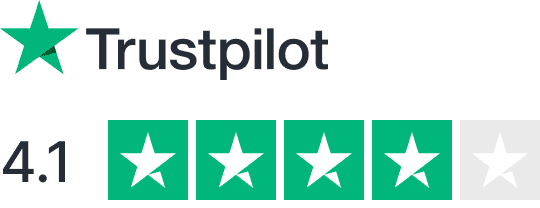Expanding remote teams while maintaining quality can be challenging, but it’s achievable with the right systems and strategies. Here’s how you can ensure consistent performance as your team grows:
- Hire the Right Talent: Use clear job descriptions, rigorous vetting processes, and technical evaluations to select skilled candidates.
- Streamline Onboarding: Create structured onboarding programs with access to tools, coding standards, and mentorship to help new hires integrate quickly.
- Use Effective Tools: Leverage project management, code review, and communication tools to enhance collaboration and productivity.
- Set Clear Guidelines: Define work hours, communication rules, and workflows to ensure accountability and smooth operations.
- Foster Team Unity: Plan virtual activities, recognize achievements, and align team members with company goals to build strong connections.
- Monitor and Improve: Conduct regular reviews, gather feedback, and offer training to continuously enhance team performance.
15 Remote Team Management Best Practices
Set Up Hiring and Onboarding Systems
Strong hiring and onboarding systems are key to maintaining quality as your remote team grows.
Write Clear Job Requirements
Detailed job descriptions help attract the right candidates and set expectations early. Focus on specific technical skills, measurable goals, and clearly defined responsibilities.
When crafting job requirements, include:
- Specific technical skills (mention versions or frameworks)
- Required years of experience with certain technologies
- Expected deliverables and performance metrics
- Soft skills important for remote work, like strong written communication
- Collaboration expectations, including time zone considerations
Screen and Test Candidates
A thorough screening process ensures you identify the best candidates who can uphold high standards. Using a multi-step approach allows for a well-rounded evaluation of both technical and interpersonal skills.
Here’s how to structure your screening process:
- Initial Assessment
Start with a strict technical review. For example, CareMinds‘ process shows that 100% of applicants go through manual resume and LinkedIn screening, but only 10.6% make it to live screening, and just 3.1% pass the technical interview phase. - Technical Evaluation
Use coding tests or project simulations that mimic real-world tasks. Have senior engineers lead technical interviews to assess problem-solving and code quality. - Soft Skills Verification
Test communication skills, cultural compatibility, and readiness for remote work with structured interviews and scenario-based questions.
Build an Onboarding Checklist
A well-organized onboarding process helps new hires integrate quickly and hit the ground running. Create a structured program that covers:
- Access setup for tools and platforms
- Documentation of coding standards and workflows
- Team communication and workflow guidelines
- Project-specific training resources
- A mentorship program pairing new hires with seasoned team members
- Clear 30/60/90-day performance goals
- Regular check-ins during the first month
With these systems in place, you’ll be ready to move on to selecting tools that enhance communication and productivity.
Choose and Use Team Tools
The tools and protocols you choose are the backbone of successful remote team collaboration. Here’s how to select and implement the essentials to maintain high standards.
Pick the Right Software Stack
A well-integrated software stack is key to seamless remote work.
Project Management and Task Tracking
- Tools for project planning and roadmaps
- Systems for managing sprints
- Time tracking software
- Platforms for document collaboration
Code Management and Quality
- Version control tools
- Platforms for code reviews
- Continuous integration systems
- Testing frameworks
Team Communication
- Video conferencing tools
- Team chat applications
- Screen sharing software
- Knowledge base platforms
Set Communication Rules
Establish clear guidelines for communication to keep everyone on the same page.
Response Times
- Urgent messages: Reply within 1-2 hours
- Regular updates: Respond by the end of the business day
- Non-critical items: Reply within 24 hours
Channel Usage
- Chat: For quick, informal conversations
- Email: For formal updates and documentation
- Video calls: For in-depth discussions and group meetings
- Knowledge base: For storing standard procedures and guidelines
A well-structured system like this ensures smooth communication while balancing real-time and written updates.
Mix Live and Written Updates
Combining synchronous and asynchronous communication helps accommodate time zones and different working preferences.
Synchronous Communication
- Daily standups (15-30 minutes)
- Weekly team syncs (1 hour)
- Monthly all-hands meetings (1-2 hours)
- Ad-hoc pair programming sessions
Asynchronous Updates
- End-of-day progress summaries
- Updates to documentation
- Feedback on code reviews
- Project status reports
Regularly review your tools and communication practices to ensure they meet the team’s evolving needs and maintain high-quality collaboration.
sbb-itb-a3fbb4e
Create Remote Work Guidelines
Clear remote work guidelines help maintain quality and consistency as your team expands. These protocols ensure accountability and smooth collaboration across different time zones.
Set Work Hours and Availability
Establish core working hours that align with your team’s needs while keeping productivity on track. Use a shared schedule to manage time zone differences and outline when team members are available.
From there, focus on tracking performance to stay on top of progress.
Track Progress and Results
Use standardized reports to monitor both team performance and project progress. These reports should include both measurable data and qualitative insights. Regular check-ins can help spot and address issues early, keeping quality on track.
To support your team further, provide them with the right tools and training.
Provide Remote Work Tools and Training
Make sure your team has access to reliable tools for communication, project management, and collaboration. Offer training on topics like remote communication, data security, and using productivity tools. Set up regular feedback channels and schedule periodic reviews to improve processes.
Keep these guidelines dynamic by maintaining a living document that evolves as your remote team grows.
Build Team Unity
A strong sense of unity within your team can significantly improve work quality as you scale remote operations. Building meaningful connections in a digital environment requires thoughtful planning and structured efforts.
Plan Online Team Activities
Creating opportunities for team bonding in a virtual setting takes planning. Schedule regular activities that combine work-related discussions with social interaction. For instance, bi-weekly virtual coffee breaks can encourage informal conversations.
You can also organize themed virtual events, such as:
- Skills Exchange Sessions: Monthly 60-minute workshops where team members teach each other practical skills.
- Problem-Solving Challenges: Weekly collaborative exercises that focus on tackling real project challenges together.
- Virtual Office Hours: A daily 30-minute drop-in session for casual chats or resolving quick issues.
These activities not only help build connections but also set the stage for celebrating achievements and aligning team efforts.
Highlight Team Success
Acknowledging accomplishments is essential to maintaining engagement and reinforcing quality work. Create a system to recognize both individual and team achievements:
- Use a dedicated Slack channel to share wins and milestones.
- Host monthly virtual recognition events to spotlight contributions.
- Introduce a peer nomination program to celebrate standout efforts.
Additionally, share success metrics like project completion rates or client satisfaction scores to keep everyone motivated and focused.
Share Company Goals
Aligning your remote team with the company’s objectives strengthens unity and purpose. Host quarterly town halls to cover:
- Updates on company-wide initiatives.
- Upcoming strategic priorities.
- How individual roles contribute to overall goals.
Consider setting up a digital dashboard to visualize:
- Team performance metrics.
- Quality standards.
- Progress toward company objectives.
Include one-on-one meetings to discuss how each team member’s work ties into broader company goals. Regular updates on company performance and market position can also help remote employees feel connected to the organization and understand how their contributions impact the bigger picture.
Check and Improve Team Quality
Keep your team performing at its best by regularly monitoring their work and making adjustments as needed. Just like onboarding and selecting the right tools, keeping an eye on team quality is essential. Use strategies that promote team cohesion while routinely evaluating and enhancing your processes.
Schedule Regular Reviews
Set up a structured review system that combines measurable data with personal feedback:
- Weekly Quick Checks: Hold 15-minute one-on-one video calls to address immediate challenges.
- Monthly Progress Reviews: Conduct hour-long sessions to evaluate:
- Progress on project milestones
- Code quality and other technical metrics
- Client satisfaction levels
- How well team members are collaborating
Record all feedback in a shared workspace to ensure accountability and identify trends over time.
Ask for Process Feedback
Getting input from your team about workflows and tools can highlight areas for improvement. Use multiple feedback methods to gather insights:
| Feedback Method | Frequency | Purpose |
|---|---|---|
| Anonymous Surveys | Monthly | Gather honest opinions on processes and pain points |
| Team Retrospectives | Bi-weekly | Discuss what’s working and what could be better |
| Open Office Hours | Weekly | Address immediate concerns and gather suggestions |
When making changes based on feedback, communicate clearly:
- The reasons behind specific decisions
- Steps for implementing changes
- Timelines for rolling out updates
- Ways for the team to provide ongoing input
Incorporate this feedback into your regular assessments to keep improving workflows.
Offer Skills Training
Remote teams thrive when they have access to learning opportunities that keep their skills sharp. Build a training program that covers:
- Technical Skills: Host workshops on new technologies and industry best practices.
- Soft Skills: Offer training in key areas like:
- Virtual communication
- Remote teamwork
- Time management
- Understanding different cultures
Evaluate the success of these training sessions by:
- Comparing skills before and after training
- Observing how new knowledge is applied in daily tasks
- Measuring the impact on project outcomes
- Checking team members’ confidence in their abilities
Encourage peer learning by having experienced team members share their expertise through recorded sessions or live workshops. This not only builds knowledge but also strengthens connections across the team, even in different time zones.
Wrapping It Up
Maintaining high standards in remote teams requires structured processes, clear communication, and a commitment to ongoing improvement. When growing remote teams, success depends on building systems that can scale as the team expands.
Staff augmentation offers access to specialized talent while maintaining quality standards. For instance, companies like CareMinds (https://mediumseagreen-lemur-727032.hostingersite.com) simplify hiring by connecting businesses with top talent in as little as three days, boasting a 96% match success rate. Prioritize expertise and measurable results over simply reviewing resumes. Establish strong workflows and protocols to ensure consistent performance. This approach strengthens every phase of your remote team’s development.
As highlighted earlier, regular evaluation and training are essential as your team evolves. Quality assurance is a continuous process. Frequent reviews, constructive feedback, and ongoing training help create thriving teams. The best remote teams strike a balance between well-defined systems and the flexibility to adjust based on team input and shifting business priorities.
For long-term success, organizations should focus on:
- Building structured onboarding and training programs
- Using efficient communication tools and clear guidelines
- Conducting regular performance reviews
- Offering ongoing learning and development opportunities
- Cultivating a strong and cohesive remote team culture
















